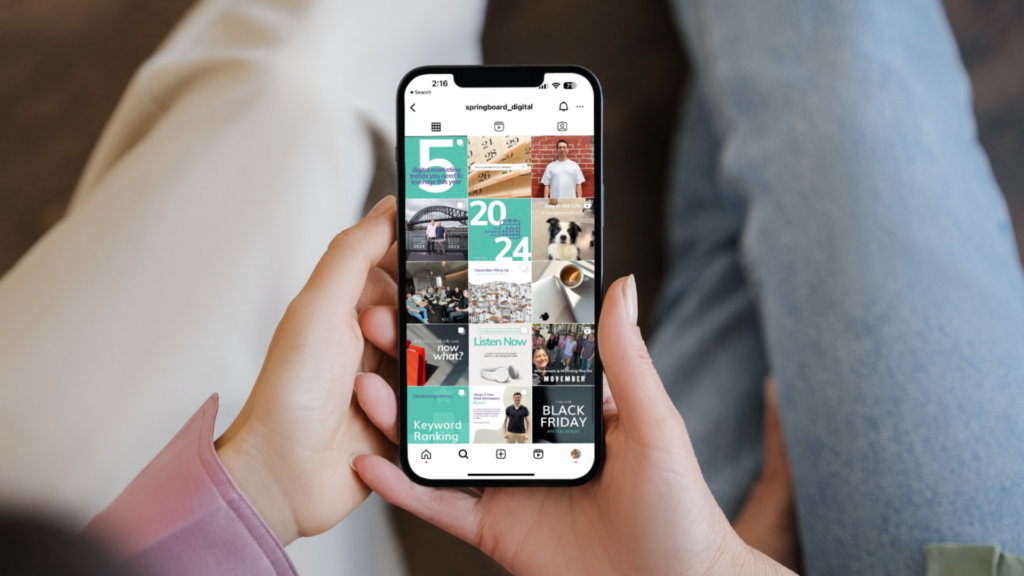In an increasingly digitised world, having a website is crucial for connecting with potential customers. Websites hold endless opportunities: they allow you to generate a visual and personable brand identity, share important information, sell your product or service, build trust and relationships with your community, expand your business, and so much more.
Driving traffic to your website is important because the number of people who visit your website equates to the number of opportunities you have to generate a lead or relationship. Great websites are virtual storefronts that can be visited by anyone in the world.
So, how do you go about driving as much traffic as possible to your website?
Here are our top six tips to increase your website traffic:
1. Implement Search Engine Optimisation (SEO) tactics
Simply put, SEO is the strategy used to get your website to the top of the “free” Google search results when customers search for businesses like yours. The old school days of black-hat SEO are long gone, and now Google’s algorithms are smart enough to know when they’re being manipulated and punish websites accordingly by pushing them further down the search results. So, what makes great SEO?
In Semrush Blog’s article 9 SEO Best Practises That You Should Follow in 2021, they suggest the following strategies:
- Align your content with search intent;
- Write a compelling title tag and meta description;
- Optimise your images;
- Optimise your page speed;
- Use internal linking;
- Improve the user experience on your website;
- Include keywords in your URL;
- Focus on getting more authoritative backlinks; and
- Publish long-form content
If you’re ready to leverage the power of SEO and boost your business’s Google ranking, contact the team at Springboard Digital to learn more about our affordable SEO services.
2. Start a blog
Blogging is incredible at attracting website traffic. Because each new blog post is a new page on your website, it will increase your opportunity to use SEO strategies like those listed above, therefore improving your ranking. By successfully implementing these, Google will crawl your website to find new content to index, which may attract more organic website traffic.
To make the most of your blog, make sure the content is engaging and relevant to your target customers. Ideally, you want to reduce your bounce rate and increase the average time users spend on each page. Keep the following things in mind when writing your next post:
- Know your target audience and their needs;
- Deliver valuable and helpful information;
- Be comprehensive;
- Publish long-form content – posts with 3000+ words get 3x more traffic;
- Use a unique style and structure;
- Reference applicable, trustworthy sources; and
- Use engaging images, videos or gifs
So, what are you waiting for? Get writing!
3. Direct customers to your website on your social media accounts
Social media is used by one in three people, so chances are high that future customers will find you on Instagram, Facebook or LinkedIn before doing so organically on Google.
There are a number of ways you can leverage your social accounts to drive traffic to your website:
- Fill in your business details on Facebook – provide a quick link to your website;
- Put your website in your Instagram bio, or use Linktr.ee to link multiple pages;
- Promote content by posting about it and adding swipe-up links to Instagram stories;
- Make your website content easily shareable – include engaging visual content like infographics, images or videos;
- Use strong call-to-actions that direct viewers to your website;
- Engage with your audience and refer them to your website for more information; and
- Use social media marketing to target people who may be interested in your business.
Social media is equally as important for businesses as it is for socialising, so it’s important to follow best-practices to leverage the most out of your accounts. Check out our blog post for a more detailed guide for how to build your business for free using organic social media.
One of the quickest ways to promote your website to interested audiences is through social media marketing (SMM), the paid advertising side of social media. We use SMM to make sure you’re getting your brand in front of new audiences within your target market, with the right messaging and creative assets.. If you want to take back control from the social media gods, click check out our SMM options and contact our team today!
4. Ensure the content on your website is up-to-date
Up-to-date content is important for your customers and SEO. Firstly, let’s look at why it’s important for customers.
Nothing shows you’re behind the times more than irrelevant blog posts and incorrect trading hours. Because your website is one of the first touchpoints a customer has with your business, it needs to prove your authority, legitimacy and expertise. For example, if you’re a social media consultant with a blog post providing advice for algorithms that no longer exist, your readers will be receiving bad advice which won’t nurture their trust in your business. To encourage customers to revisit your site or share it on social media, your content needs to be fresh. After all, you’d be disappointed if your favourite blogger or Instagrammer didn’t upload new content! Also check your listed trading hours are correct so customers don’t get confused or turn up while you’re closed.
Secondly, let’s take an SEO perspective. By updating your website content, you’re essentially proving to Google that you’re an active business. Google will favour up-to-date content in its search results because it wants to give users relevant content – recently posted or updated content will most likely be more relevant than a post from three years ago.
To keep your website content up-to-date, we recommend conducting a deep clean. Delete outdated posts, merge similar posts into one single article, update posts that generate a lot of traffic and make sure you’re including relevant keywords through your website.
5. Make sure your website is mobile-user friendly
Over 50% of website traffic comes from mobile users, so it’s crucial your website is user-friendly for both mobile and desktop formats – there’s nothing worse than a website which doesn’t automatically resize to your screen! The more work a user has to do to use your website properly, the less likely they are to continue their journey through your website and, ultimately, make a purchase.
Most website builders, like WordPress and Wix, will allow you to easily toggle between desktop and mobile view so you can ensure your content is logical, easy to navigate and visually consistent. Do these 7 things to make sure your site is mobile-friendly:
- Use a simple and logical design;
- Uses the screen’s prime real estate to your advantage;
- Use buttons large enough to click and make sure they’re correctly placed and stand out;
- Use regular sized text that doesn’t fill up the entire screen;
- Make sure it’s responsive; and
- Don’t use annoying pop-ups.
Your mobile users will thank you!
6. Set up Google My Business
Because over 90% of searches are made on Google, Google My Business (GMB) is a necessity for all businesses.GMB is a free and easy-to-use tool which lists your business’s important details on Google Maps and within search results which are specific to your product or service. Because customers searching for specific products or services are more likely to be ready to make a purchase, you can leverage website traffic by setting up your GMB correctly.
For example, if someone searches for a ‘professional photography studio near me,’ Google will display a list of the most relevant photography studios based on the user’s current location. If one studio has a GMB without images, a website that isn’t mobile friendly and no address, they’re going to be less appealing than one with images of their studio, a usable website and an up-to-date address with directions. Trust us, a great Google My Business profile can only do your website traffic favours.
Great GMBs will have all the information a customer needs so they can easily locate your website or store location and are enticed to purchase your product or service. Make sure you include include your operating hours, contact information, address, recent photos, shoppable product pages and, of course, link to your website.

In Conclusion…
If you’re struggling to drive traffic to your website, you’re not alone. Promote everything your website has to offer by using these tips, and try tracking user experience with Google Analytics – the results will astound you!
We understand the whole process is overwhelming, so the Springboard Digital team is here to help whether you’re an ecommerce or a bricks-and-mortar store. To discuss how we can help your online presence, get in touch with us today!






